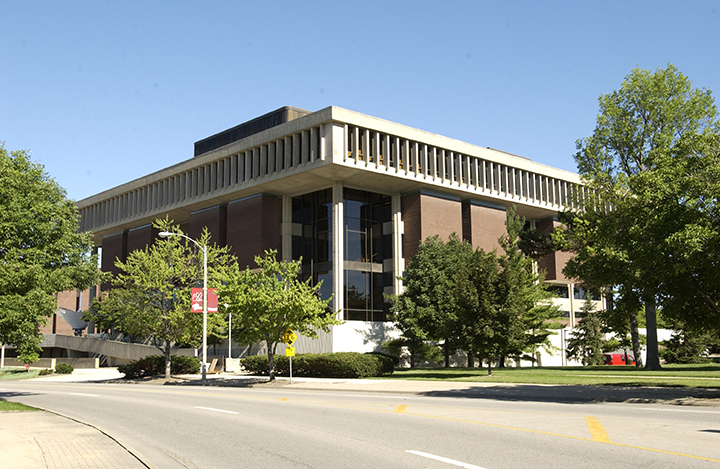On March 8, 1476, or thereabouts, the Venetian publisher, Jacopo de Rossi, went to press with Poggio Bracciolini’s Historia fiorentina. This first edition, written in Italian, describes the history of Florence between the years 1350 and 1455. Five hundred and thirty-six years old, Historia fiorentina holds the distinction of being Milner Library’s oldest book.
Surprisingly, Milner’s copy of Bracciolini’s history was only recently “rediscovered,” though it had never really been missing. To the best of our knowledge, Illinois State University acquired this Renaissance masterpiece in the late 1960s from a dealer of rare books. It was catalogued as Milner’s 361,635th item. We now have about 1.6 million books. However, perhaps through clerical error, the Historia soon went missing.
To provide some historical context, the Historia was published about 36 years after Guttenberg invented the printing press and 16 years before Columbus discovered America. According to reigning geographical notions of the time, the world was flat. We believe that Milner’s copy is one of about 20 that exist worldwide. Others may be found at such institutions as the universities of Oxford, Yale, Harvard, and Johns Hopkins.
An Italian humanist and calligrapher, Bracciolini (1380-1459) was one of those scholars to whom we owe a debt of gratitude for discovering many early Greek and Roman manuscripts from the monastic libraries of Europe. He was a prolific correspondent and author of numerous “moral dialogues,” which were common during this period. The exciting story of Bracciolini’s discovery of an epic work by Lucretius is retold in Stephen Goldblatt’s The Swerve: How the World Became Modern, winner of the 2011 National Book Award for Nonfiction.
Oversized by contemporary standards, the Historia is covered in vellum, a hardened and stretched animal skin. At one time, a latch had been attached to the cover, but it is now long gone. The book consists of about 200 pages of continuous, beautifully printed text, divided only by chapter headings. Apparently, the use of paragraphs to separate ideas had not yet been invented.
Differences exist among the various copies of the Historia. Some show the influence of the earlier practice of illumination. Most noticeably, in illuminated copies, the chapter pages begin with a large, painted capital letter. Milner’s copy includes place holder boxes at the beginning of these pages, with “guide” letters where the illumination could have been applied.
Returning to our recent rediscovery: We have now determined that the original card catalog record for Bracciolini’s history incorrectly described its location. Instead of being in the regular book stacks as the record indicated, the Historia has always been housed in the Department of Special Collections, as it should be. However, no one realized that it was there.
In 1998, library staff became aware that the book was missing from the regular stacks and for a number of years, periodically searched for it. In 2007, after numerous efforts, the book was formally withdrawn and its record “suppressed” in our online catalog. We suspect that the staff thought they were searching for a facsimile of the original or that the record was simply wrong.
Fast forward to 2011: During a major review of library holdings on Milner Library’s third floor, Historia fiorentina reappeared in a list of books that have been shelved there. Interest piqued by this unusual item, library staff conducted a thorough search for the book in a variety of likely and unlikely locations. This time, they succeeded. Milner’s oldest book was found sitting in perfect call number order in the Department of Special Collections.
There is a certain justice in the rediscovery of Poggio Bracciolini’s Historia fiorentina. After all, he was the scholar who rediscovered much of the classical writings that have shaped Western Civilization. We were simply returning the favor.
Editor’s note: The author is the senior associate dean for information assets at Milner Library.

